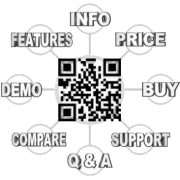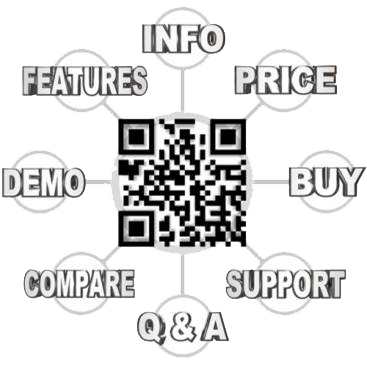 Quick Response codes are created for the smartphone world. They are intended to be scanned using smartphones with on-board digital cameras. The only additional thing your consumer requires is a QR reader which will instantly decodes the QR code in order to unlock it’s secret message.
Quick Response codes are created for the smartphone world. They are intended to be scanned using smartphones with on-board digital cameras. The only additional thing your consumer requires is a QR reader which will instantly decodes the QR code in order to unlock it’s secret message.
How The QR Code Boom Will Affect You
QR (quick response) codes have opened up a new avenue for marketers to increase and measure engagement with consumers. With so many uses and tangible benefits, it’s no wonder QR codes are becoming more popular each year.
First developed in Japan as a means to track vehicles during manufacturing, these two-dimensional barcodes are now being embraced by a variety of industries. In fact, a recent study on ClickZ.com shows that QR popularity and use has skyrocketed. Between June 2011 and June 2012, consumer QR code scanning rose by 400 percent. June 2012 also saw an average of 120 scans per minute and 4 million first-timers scanning QR codes.
Decoding the trends
In order to measure the impact of QR codes, a recent QR codes use survey by Pitney Bowes asked consumers in the U.S., U.K., France, and Germany about their experiences with QR codes.
Results revealed that approximately 15 percent of respondents had used QR codes before. It also showed that QR code use in the U.S. is far ahead of Europe, with almost 20 percent of American consumers engaging in code scanning. With more than 100 million U.S. smartphone users, that means that about 20 million people have now used a QR code. Forrester Research predicts that this number will continue to grow rapidly worldwide and that 1 billion consumers will have smartphones by 2016.
So who’s using QR Code?
According to the study, QR codes have been used by 27 percent of 18- to 24-year-old. There is also high usage amongst 25- to 34-year-old in each country — a highly desirable consumer age demographic where people are settling into careers and earning higher salaries.
Cracking the Qr code
With all this growth, it’s little wonder that marketers are looking seriously at tools that can tap into this massive marketing potential. But what’s the best way to use these codes? Placement of QR codes is limitless, but that doesn’t mean they should be placed anywhere and everywhere. Clear patterns are already emerging around the most effective implementation.
Surveys show that, on average, most QR code capture comes from print applications. The Pitney Bowes QR codes use survey shows that magazines encourage the highest levels of QR code interaction (15 percent), closely followed by posters and mail (both 13 percent).
The code of conduct
Let’s look at a creative example. During the 2011 holiday season, JC Penney gave customers QR code gift tags. The customer could snap the code, record a gifting message, and then enclose the code with the present. The recipient would then snap the code and hear the personal message.
The potential for further adoption of QR codes is enormous. The sheer number of smartphone users across the globe provides businesses with a growing audience demanding mobile content and purchasing products and services while on the move. Businesses that act now will get ahead of the emerging QR code trend for a competitive advantage, better customer experiences, and highly measurable results.
You can view the original article here
There are many internet websites that allow businesses to create quick response codes totally free. All you need to do is search for “free QR code generator” and you will have a wide selection to pick from.These will be the typical standard black dot style QR Codes
However, you might need to consult with professional Mobile Marketing experts (like us!) to help you in creating the most effective QR codes for your business.

